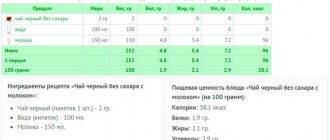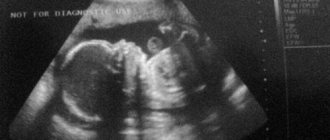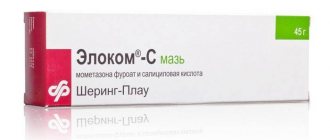Why are dairy products not digested?
The main active substance in all dairy products, which causes problems with their digestibility, is lactose. And the main enzyme in the body that promotes its absorption is called lactase. From childhood, if there is no congenital intolerance to milk, all children equally normally digest dairy products. But, with age, the production of the lactase enzyme may decrease, so that it becomes insufficient for the absorption of milk, or lactase may cease to be produced by the body altogether.
Symptoms
At birth, children have a sufficient amount of the enzyme lactase in their intestines, which can break down lactose (milk sugar). But there are exceptions when this enzyme is not enough or is not produced at all, for this reason a disease such as lactose intolerance manifests itself.
In young children, symptoms of the disease are detected in the following reactions:
- whims when feeding;
- not breastfeeding or bottle feeding;
- frequent and severe regurgitation;
- flatulence;
- watery stool with a sour smell, less often - constipation.
Lactose intolerance in infants
In an older child, the symptoms and consequences of lactose intolerance will include:
- delay in physical development (insufficient weight gain and low growth rate);
- muscle hypotension (decreased muscle tone);
- convulsive seizures (simultaneous spasms of the muscles of the whole body);
- flatulence, rumbling in the stomach and spasmodic pain;
- irritability, mood swings, fatigue.
Symptoms indicating a lack of lactose
It is often possible to confuse poor milk absorption with an allergy to it. The symptoms of allergies are different: difficulty breathing, nasal discharge, tearfulness, and rash. An allergy can arise from a very small amount of a product containing an allergen, and the use of all milk in this case is completely prohibited. If you are intolerant, there is no such complete prohibition.
Symptoms of poor absorption:
- Bloating, grumbling, colic.
- Belching and gases.
- Abnormal bowel movements, vomiting.
- In some cases, pain in the abdomen or intestines.
It takes half an hour to two hours after eating for symptoms to appear. The symptoms themselves and their progression depend on the ratio of dairy products consumed and the lack of lactase for its absorption, respectively.
Allergy treatment
What to do if an allergy to lactose and dairy products is diagnosed will be determined by your doctor. Treatment is prescribed taking into account the severity of the symptoms of the disease and general health.
Diet
All products that contain lactose should be excluded from the diet. First of all, the diet involves significant limitation of the consumption of milk and dairy products. It is not worth not eating such food completely, as it contains substances that are beneficial to the body. As an alternative, you can include soy milk in your diet.
Drugs
To correct the general condition and reduce the risk of negative consequences, specific immunotherapy is performed. The patient is given a kind of vaccination by injecting a small dose of casein subcutaneously. As a result, the body begins to actively produce antigens that neutralize the foreign substance. This allows you to increase resistance to the action of the provocateur.
If there are severe signs of the disease, take antihistamines:
- Loratadine . Price 95-150 rub.
- Fexofast . Price 270-300 rub.
- Desal. Price 250-400 rub.
- Erius . Price 450-650 rub.
Erius Desal Fexofast Loratadine
The use of enterosorbents is also indicated:
- Polysorb . Price 80-350 rub.
- Smecta . Price 140-300 rub.
- Enterosgel . Price 420-600 rub.
- Activated carbon . Price 15-65 rub.
Polysorb Smecta Enterosgel Activated carbon
To eliminate symptoms, symptomatic therapy is carried out:
- Nasal drops Naphthyzin, Galazolin, Sanorin . Price 20-280 rub.
Naphthyzin Galazolin Sanorin
- Eye drops Lecrolin, Okumetil, Visoptik . Price 94-384 rub.
Lecrolin Okumetil Visoptic
- Ointment Tsindol, Zinc ointment, Eplan . Price 60-165 rub.
Eplan Zinc ointment Tsindol
Folk recipes
Areas with skin rashes are wiped with decoctions and infusions of medicinal herbs (chamomile, yarrow, St. John's wort, string, etc.). For older children and adults, such compounds can be taken orally to strengthen the immune system and speed up the body's fight against the disease. Instead of tea, it is useful to use rosehip decoction, which has an immunomodulatory effect.
Diagnostic methods
Methods for determining lactose intolerance:
- Analysis of stool acidity - the method consists of examining a sample of the patient’s stool, and the acidity is within normal limits, which means that the milk is absorbed normally.
- Test for the presence of hydrogen.
- The tolerance test is a slightly longer and more uncomfortable test for the patient than the technique above. Also on an empty stomach, a person is given a liquid containing lactose to drink, and blood is drawn several times, every half hour after consumption. If there is no increase in blood sugar over time, this indicates poor absorption of milk. Accordingly, if there is a decrease in this level, then milk is absorbed normally.
- Intestinal biopsy. Not the most pleasant procedure, but it still gives an accurate result. Rarely used.
- A load test is a simple and slightly risky test. Risky if you have an undiagnosed allergy. The bottom line is to drink a glass of milk on an empty stomach and spend some time under the supervision of doctors.
- Genetic test for lactose intolerance - reveals the presence of genes responsible for the production of lactase in the body and their condition.
- And probably the most unpleasant and not at all necessary analysis is the examination of the gastrointestinal tract using an endoscope inserted through the oral cavity.
Lactose curve
A study aimed at collecting data and plotting a comparative graph of glucose (sugar) and lactose levels. The subject drinks a liquid containing lactose on an empty stomach. And over a period of time, blood samples are taken from him. The samples are analyzed and a schedule is drawn up. If the lactase line does not exceed the glucose line, then conclusions are drawn about lactase enzyme deficiency.
Small bowel biopsy
One of the outdated methods of testing for food digestibility. It consists of selecting a small section of the small intestine and taking a sample of it, which is then examined. The technique is traumatic and is prescribed less and less often - it is not prescribed to children at all.
Stool carbon analysis
This analysis is mainly prescribed to infants as the safest research method. And it is on infants that the most accurate results are obtained. Before taking the test, it is recommended not to change the baby’s daily diet, but to transfer the sample to the laboratory no later than 4 hours from the moment it was taken.
The sample is examined for the presence and percentage of carbohydrates. If the carbohydrate content is from 0.25% to 0.5%, then this is within normal limits. For an infant, the norm can reach up to 1%.
Hydrogen breath test
It is believed that of all tests, testing for the presence of hydrogen is the most accurate. The testing method involves the subjects drinking a specially prepared liquid containing lactose, and after some time breathing into a special device. If the device detects hydrogen exhaled by a person, then this 100% confirms problems with absorption. Attention! The analysis is carried out on an empty stomach.
Coprogram
Another method for determining problems with the absorption of fermented milk products in children. Just as when analyzing stool in infants, you must follow your usual diet before taking a sample. The sample must be submitted to the laboratory no later than 12 hours from the moment it is received.
The biomaterial is analyzed for acidity content. It is believed that if the acidity level is exceeded, this is a consequence of fermentation of undigested lactose.
Urine lactose test
The test is not very accurate, but it is quite suitable for dispelling your doubts. The test is carried out at home and is similar to a pregnancy test. Litmus test paper is wetted in urine and acquires a certain color. The color value must be determined using a special scale.
Blood and urine analysis
If we are talking about blood and urine testing, then this is an analysis for the content of galactose, a byproduct of the breakdown of lactose. First, a control blood sample is taken from the patient to determine the normal level of galactose, after which they are given a special mixture and after a certain time samples are taken for analysis again.
Symptoms of lactase deficiency
Most often, symptoms in infants occur in the third to sixth week of birth.
Clinical manifestations vary from person to person. What matters is the activity of the enzyme, the amount of carbohydrate ingested with food, and the characteristics of the intestinal microflora.
Lactose allergy occurs from the moment of birth, but most often symptoms in infants occur in the third to sixth week of birth. The amount of food increases and, accordingly, the amount of milk sugar in the child’s diet increases.
5-8 minutes after the start of food intake, the baby begins to behave restlessly. He cries and refuses to eat. The intestines are full of gases. Flatulence, bloating, and acute pain prevent newborns from eating peacefully.
Increased intra-abdominal pressure provokes regurgitation of food. Stool in children with lactose intolerance is foamy, sour in smell, watery. The baby poops frequently. Lack of daily bowel movements due to intestinal spasms can also be a sign of LN. This happens in 10% of children. When the pathological process is severe, intoxication of the body with dehydration develops.
A medical diagnosis of “lactase deficiency” is made based on characteristic clinical signs, including a decrease in symptoms with a decrease in the amount of disaccharide in the child’s diet. Laboratory studies are carried out and instrumental methods are used:
- the content of carbohydrates in the feces of infants is no more than 0.25%, and in healthy children over 1 year of age there are no carbohydrates in the feces;
- the coprogram shows a decrease in stool pH below 5.5 (indirect sign);
- a method of detecting hydrogen content on exhalation is practiced;
- Loading methods with lactose are performed to differentiate lactose intolerance and food allergy to cow's milk protein (these pathologies are similar in symptoms).
The diagnosis of “primary lactase deficiency of the adult type” is established through genetic research.
Children with lactose intolerance had a history of complications (oxygen starvation) during pregnancy and childbirth. Often close relatives have this pathology.
In what cases is a study prescribed?
Intolerance testing may be prescribed in the following cases:
- For young children with intestinal problems.
- If there are obvious symptoms of intolerance.
- To determine the risk of developing osteoporosis.
- For a comprehensive study of the gastrointestinal tract in adults.










